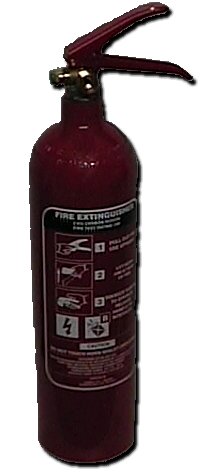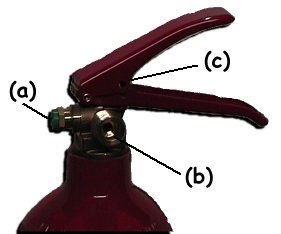High Pressure Systems - Tanks
system) provided is generally very low meaning the system will use air up faster than you can recharge it. The most common solution then is to use a high pressure supply cylinder.
 For
combative robots there are several things to consider. Firstly, Robot Wars
rules mean that for safety reasons, you can only have a supply source up
to 1000psi (70bar). An off the shelf supply cylinder (eg. a diving cylinder)
would normally be higher pressure than is allowed (oxygen is normally supplied
at around 3000psi) and they also tend to be very heavy. There are some
that are okay; for example Soda Stream bottles are Carbon Dioxide (C02)
filled and can be used as is. The trouble is that they are only designed
for slow drinks, not fast acting actuators. They have been used in combat
(Behemoth in the Second Wars used them) but they cannot be recommend for
anything serious.
For
combative robots there are several things to consider. Firstly, Robot Wars
rules mean that for safety reasons, you can only have a supply source up
to 1000psi (70bar). An off the shelf supply cylinder (eg. a diving cylinder)
would normally be higher pressure than is allowed (oxygen is normally supplied
at around 3000psi) and they also tend to be very heavy. There are some
that are okay; for example Soda Stream bottles are Carbon Dioxide (C02)
filled and can be used as is. The trouble is that they are only designed
for slow drinks, not fast acting actuators. They have been used in combat
(Behemoth in the Second Wars used them) but they cannot be recommend for
anything serious.
Mig
welding cylinders are also a possibility. They come in CO2
and Argon types which can be bought cheaply (about 7 UKP) from auto suppliers
such as Halfords. They again have a small flowrate, but can hold a bit
more gas than Soda Stream bottles, so may be of use. They are made of aluminium
which is considerably lighter than the steel used in Soda Stream bottles.
You can also get the regulators
cheap of course. Could be
fine for smaller applications.
The
other main option is use a suitable holding cylinder and refill to the
maximum pressure from a larger supply. A good example is the fire extinguisher,
shown here, that is the holding cylinder from More Panda Monium. John Reid
also used this for his system on Killerhurtz. This needs to be a CO2
bottle as the powder types are not able to safely handle the high pressure
required (note that the powder bottles can be used as buffer tanks however).
This bottle is rated at about 200bar working
pressure - the maximum pressure
it should be used for in normal use. 200bar is well beyond our working
levels for robots. The cylinder has the details stamped on its neck. Also
listed are the test dates and the burst pressure - typically around twice
the working pressure.
The bottle needs to be connected to a suitable regulator and will also need to be filled with a supply gas. This could be any inert gas - CO2, Nitrogen, air or a Noble gas such as Argon. Gases such as Oxygen are not generally a good idea as they tend to encourage fires when things get hot. Also combustible gases - for example acetylene - are not clever. Be sure to read this short guide to gas safety, based on a document from Queen Mary and Westfield College.
 Once
you have the cylinder, you need to know what does what. (a) is the burst
pressure cap. This is basically a plastic cap that will burst if you go
past a safe pressure. DON'T have a system without
Once
you have the cylinder, you need to know what does what. (a) is the burst
pressure cap. This is basically a plastic cap that will burst if you go
past a safe pressure. DON'T have a system without
one on the high pressure
side. (b) is the inlet/outlet connector. This has a screw thread. In this
case it is the CO2 type connector.
Different gases often have different connectors to make sure you don't
connect the wrong type of gas to an application - gas welding for example.
Remember that the gas coming out of here is at high pressure, so anything
you connect to it will need to be strong. Hydraulic hose (with the appropriate
connections) can be used normally to extend, for example, regulator connections.
This kind of hosing is quite expensive and is best made up to order by
a hydraulics expert or the people at RS or Farnell. (c) is the pin valve
used to open and close the output. This works much as you would expect
- press the handle together and the valve opens to let gas out; release
to close. The fire extinguisher handle has a pin hole that can be used
to lock it open or closed. Don't fiddle with this mechanism as it will
easily break under pressure -and believe me when I say you don't want that
to happen!!